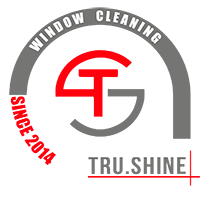Pros & Cons of Gutter Guards
A gutter guard system helps prevent clogs and keeps the guttering system working smoothly for a longer period time before it will need to be replaced. There are several types of gutter guard systems and this list of pros and cons will help you select the one that’s right for your home.
Metal Screens
This is a popular choice for the DIYers. The screens look similar to chicken wire and are made of metal or galvanized steel and are relatively easy to install.
The metal screens do allow some organic matter to enter the gutters and periodic cleaning will still be needed.
Plastic Screens
Another popular choice for DIYers and less expensive than metal screens. The plastic screens will allow small debris to enter the gutters, plus the holes in the screens catch debris and become clogged. Regular cleaning will still be needed.
Reverse Curve
The tried and true design that most big-name gutter installing companies use. The reverse curve style comes in both metal or plastic and consists of a round sheet of metal which guides water into the gutters while deflecting debris away from the gutters. Some organic matter will still get past the reversed curve gutter guards and into gutters, so cleaning will still be needed periodically.
Reverse Curve with Waterfall
This gutter guard system consists of 1-3 parallel slots to create a waterfall effect as the rain water runs down the roof and through the gutters. Typically made from recycled plastic, this gutter guard system will need to be cleaned periodically.
Sponges or Pipe Cleaners
Labor intensive at cleaning time. Either system requires you to place the s or pipe cleaners in the gutter to catch falling debris. Either type must be removed periodically and shaken to remove captured debris, then placed back into cleaned gutters.
Mirco-Mesh
Considered to be the best type of gutter guard, but it must be installed by professionals. The micro-mesh guards are made of stainless steel, have holes smaller than the size of sewing needles and allow no debris to enter the gutters.
The design allows rain water to continue to enter the gutters even when debris is laying on top of the micro-mesh. And when the rain ends, the slightest breeze will blow away whatever debris has fallen onto the mesh. An occasional brushing is all that’s needed to maintain the system after installing micro-mesh gutter guards.
